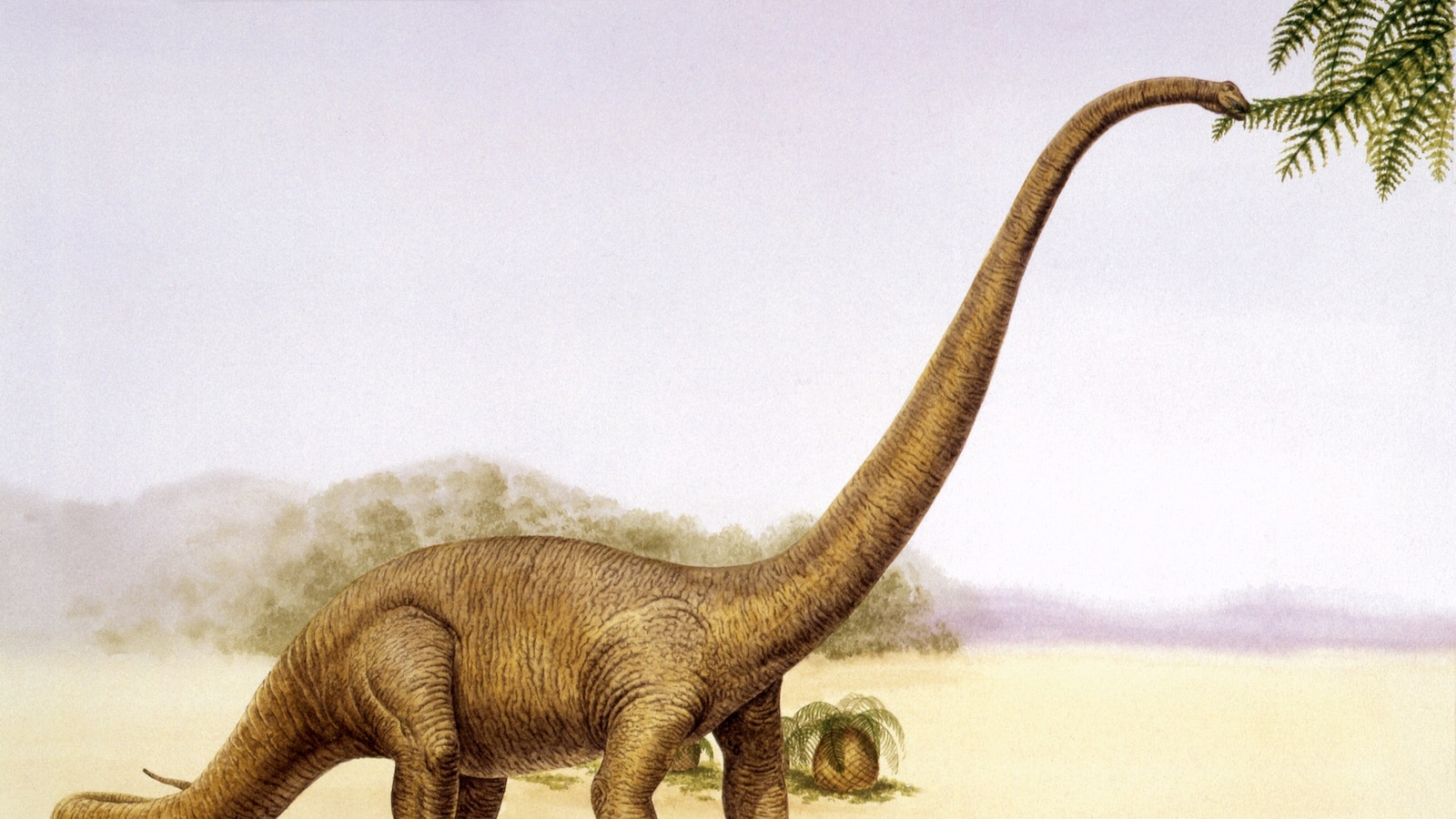AI Generated Dinosaur Discovery: Meet the 39-Foot Huashanosaurus!

Imagine stumbling upon a creature that roamed the Earth over 200 million years ago, a massive plant-eating dinosaur stretching an astonishing 39 feet long. Paleontologists have done just that, revealing a brand new species that will reshape our understanding of Jurassic giants!
Meet the Huashanosaurus qini, a fascinating addition to the prehistoric family tree discovered in the Guangxi region of China. This newly identified dinosaur belongs to a new genus and species of early eusauropod from the Jurassic period, as detailed in a recent study published in the journal Acta Geologica Sinica.
The remnants of this colossal beast were unearthed in the Shiwandashan Basin, part of the Wangmen Formation. This geological treasure trove in southern China is renowned for its Jurassic fossils, and the discovery was made near the Mingjiang River, where researchers came across a partial skeleton containing vertebrae, ribs, and other significant bones.
Measurements from the recovered fossils indicate that Huashanosaurus qini likely stretched about 12 meters, or 39 feet long, and confidently walked on four sturdy legs. Paleontologists knew they were onto something special when they identified unique traits in the skeleton known as autapomorphies.
Distinctive features like a hooked-shaped posterior process of the ulna and a crescent-shaped proximal ulna set H. qini apart from other sauropods. These adaptations might have played a crucial role in managing weight distribution across its massive body, enhancing its ability to thrive in its environment.
Researchers believe that this dinosaur inhabited lush, forested areas near rivers and lakes, reflective of the humid climate that characterized the region at the time. Alongside Huashanosaurus, fossils of bony fish scales and the remains of plesiosaur teeth were found at the site, indicating a thriving ecosystem bustling with life.
Phylogenetic analysis suggests that H. qini is potentially the oldest sauropod in South China, dating back to the early to middle Jurassic, between 200 million to 162 million years ago. This discovery pushes back the timeline for sauropod fossils in the region by about 30 million years!
What’s even more exciting? Huashanosaurus qini is the second eusauropod identified in Guangxi, following the Jingia dongxingensis, which was revealed last year. As herbivores known for their long necks, tails, and pillar-like legs, sauropods continue to captivate our imagination and deepen our understanding of the ancient world.
The research team was composed of dedicated scientists from the Guangxi Museum of Natural History, the Cultural Relics Administration of Ningming County, and the Institute of Vertebrate Paleontology and Paleoanthropology at the Chinese Academy of Sciences. Together, they’ve enriched our knowledge of Jurassic-era eusauropods and their evolutionary journey.


















